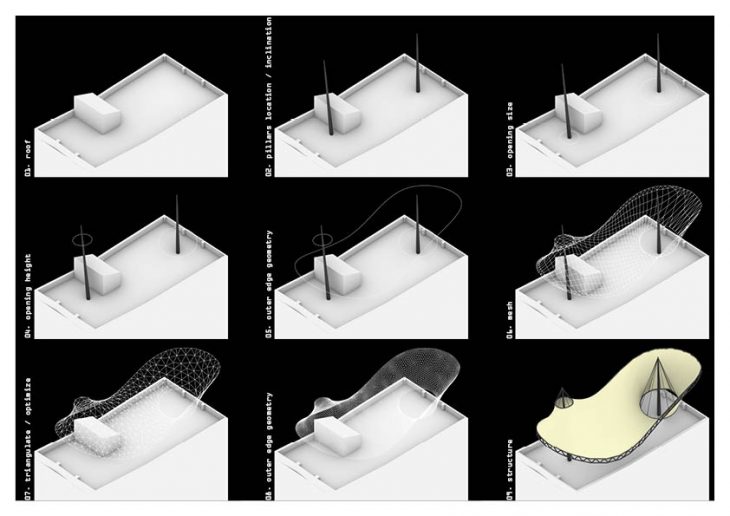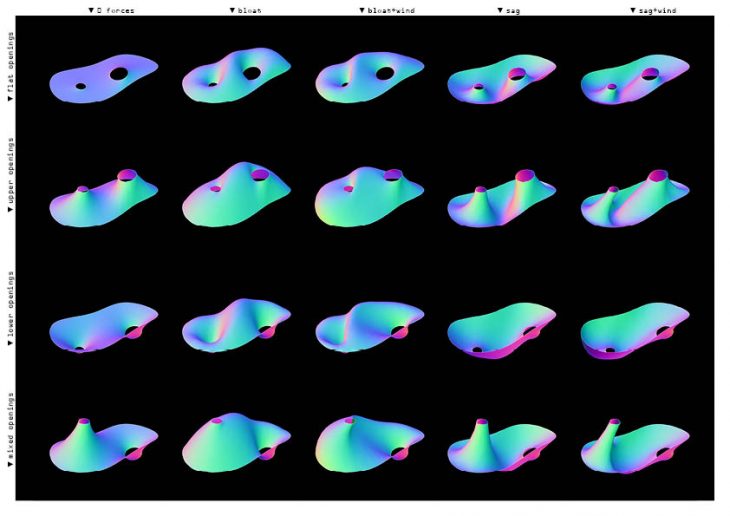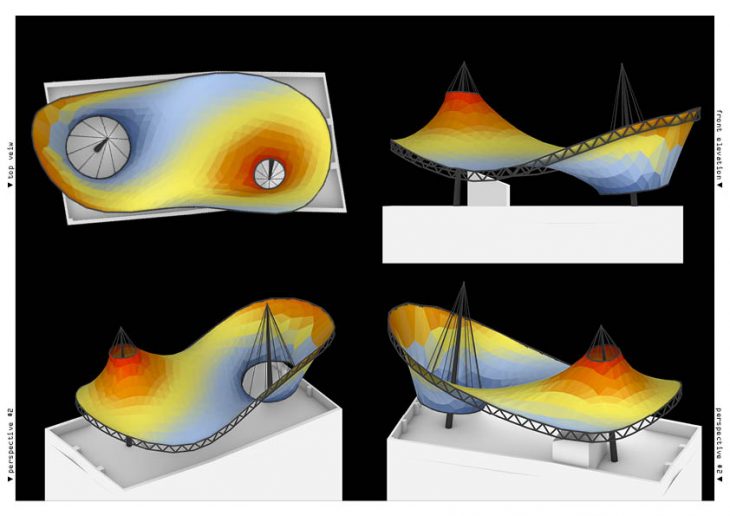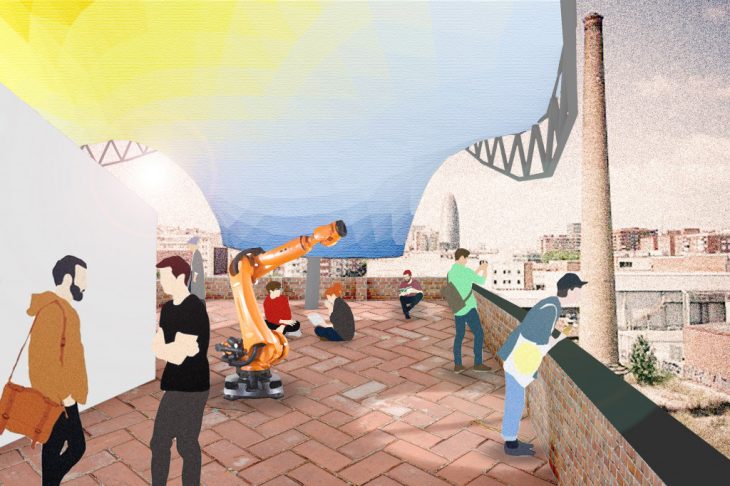Computational Design
Assignment 3: Forces of Nature
Brief:
From Gaudi’s physical chain models, Frei Otto’s tensile model studies to Phillips Blocks funicular structures design with RhinoVAULT, natural forces help mold balanced and optimized structures. With the aid of interactive physics simulations, we can create digital materiality and real-life behavior as a form-finding protocol. The aim of this assignment will be to create a live-interactive installation using forces as parameters using Kangaroo as the main engine.
The main goal was to build a simple interface where the user can “play” with inputs such as attractors, sliders, functions and time to transform an object in space. The selected location for the installation was the IaaC rooftop area.
For my intervention, a user starts by picking two locations on the roof where the pillars are going to take place. Then they can define their heights and inclinations separately for each pillar. The next step is to define openings radiuses and their elevations along the pillars. After that, a user can modify the boundary edge. After the general geometry is finished the user can add external forces such as Wind and VertexLoad (Bloat) in Kangaroo. The smoothing, optimization, and subdivision happen after this step automatically. The structure is generated automatically at the end.

Logistical Steps

Form Finding
In my case, I wanted to be able to divide the roof into multiple spaces with only one surface. By pulling one opening down to the eye level and another one up into the sky I was able to create two unique experiences: one small and visually enclosed, while the other space is vast and tall.

Views

Render
Assignment 3: Forces of Nature is a project of IAAC, Institute for Advanced Architecture of Catalonia developed at the Master in Advanced Architecture in 2020 by:
Students: Dusan Savicevic
Faculty: Rodrigo Aguirre